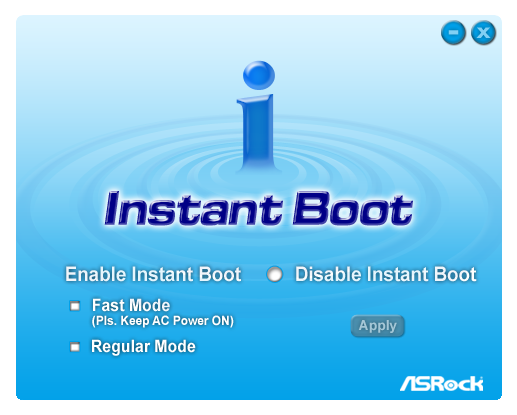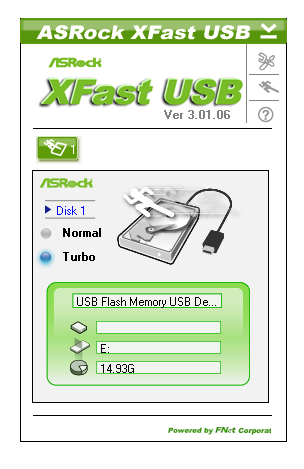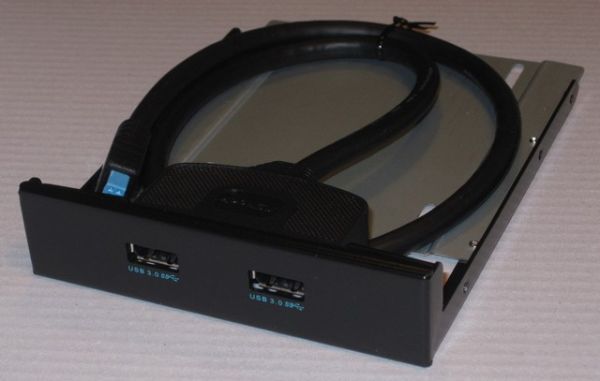Welcome to Sandy Bridge, with the ASRock P67 Extreme4
by Ian Cutress on January 3, 2011 7:00 AM EST- Posted in
- Motherboards
- ASRock
Board Features
| ASRock P67 Extreme4 | |
| Market Segment | Performance |
| CPU Interface | LGA 1155 |
| CPU Support | i3/i5/i7 Sandy Bridge |
| Chipset | P67 |
| Base Clock Frequency |
100MHz, 85-110MHz in 1MHz intervals 100.39MHz default in OS |
| DDR3 Memory Speed | 1066MHz by default. 1333-2133MHz supported. |
| Core Voltage | Auto, 0.600V to 1.520V in 0.005V intervals |
| CPU Clock Multiplier | Dependant on CPU |
| DRAM Voltage | Auto, 1.200V to 1.800V in 0.015V intervals |
| DRAM Command Rate | Auto, 1N, 2N |
| Memory Slots |
Four 240-pin DDR3 DIMM slots in dual-channel Regular unbuffered DD3 memory Up to 32GB total supported |
| Expansion Slots |
3 x PCI Express 2.0 x16 slots (PCIe 1 and 2 operate at x16 in single mode or x8/x8 in dual; PCIe 3 operates in x4 mode) 2 x PCI Express 2.0 x1 slots 2 x PCI slots Supports AMD Crossfire Supports NVIDIA SLI |
| Onboard SATA/RAID |
4 x SATA 6 Gb/s, all NCQ and AHCI 2 of these support RAID (0, 1, 5, 10, Intel Rapid Storage) 2 from the Marvell SE9120 (no RAID) 4 x SATA 3 Gb/s, all NCQ, AHCI, RAID (0, 1, 5, 10, Intel Rapid Storage) |
| Onboard |
4 x SATA 3 Gb/s w/ RAID 4 x SATA 6 Gb/s (2 w/ RAID) 1 x Floppy 1 x IR Connector 1 x COM port header 1 x HDMI_SPDIF header 1 x Firewire header 1 x Front Panel audio connector 1 x Dr. Debug LED 1 x Power switch 1 x Reset switch |
| Onboard LAN | Gigabit Ethernet via the Realtek RTL8111E |
| Onboard Audio |
7.1 Channel HD Audio via Realtek ALC892 Support for THX TruStudio Pro |
| Power Connectors |
24-pin ATX power 8-pin 12V power 4-pin molex connector for Crossfire/SLI |
| Fan Headers |
1 x CPU fan 1 x CPU auxiliary fan 3 x Chassis fans 1 x Power fan |
| Fan Control |
CPU fans controlled jointly, 10 levels Chassis fans controlled independently, 10 levels |
| I/O Panel |
2 x PS/2 Keyboard/Mouse Connectors 1 x Coaxial, 1 x Optical SPDIF Out 6 x USB 2.0 2 x USB 3.0 via Etron EJ168A 1 x eSATA 6.0Gb/s (Shared with onboard connector) 1 x Gigabit Ethernet 1 x Firewire 1 x Clear CMOS HD Audio Panel |
| UEFI Revision | UEFI 1.20B |
In the box
- Quick Installation Guide, Manual, Driver CD
- 2S SLI Bridge
- I/O Shield
- 4 x HDD Screws
- 6 x Chassis Screws
- Floppy Drive cable
- 4 x SATA cables (2 x 90º cables)
- 2 x Molex to SATA power cable
- Front USB 3.0 Panel
- Rear USB 3.0 Bracket
What I like about the extra hardware in the box is this USB panel. It has a space for an SSD, so it frees up a drive bay while giving you front-port USB 3.0 capabilities. This panel, on its own, would probably sell for $15.
Software
Previous ASRock motherboards have been bundled with a heap of software for all sorts of overclocking or power saving modes. Thankfully, ASRock have been smart this time—they have packaged most of their utilities into one program, making it quicker and easier to install and uninstall. With their CD, apart from the driver updates, ASRock include three programs:
ASRock eXtreme Tuning Utility (AXTU)
The AXTU is not the tool we have come to expect from the socket 1156 and socket 1366 motherboard utilities. It shows the vast array of speeds, temperatures and voltages you would expect, and the tool allows you to control the fan speed on the fly. However, a successful CPU multiplier or voltage change requires a reboot. The main criticism about the overclockability tool is that it lacks the ability to manage the memory timings.
The OC DNA is similar to previous ASRock offerings, allowing users to share UEFI settings with each other. The Intelligent Energy Saver has received a trimmed down version—this one no longer states how much energy you are saving over a period of time, just the current voltage, speed, number of phases being used, and whether it is on or off.
ASRock Instant Boot

Another stalwart in the ASRock arsenal is its Instant Boot software. The idea behind it is that when you tell the PC to shutdown, the computer will reboot up to the point where the OS is loaded, then enter a low power mode. When the power button is pressed next, the computer will resume normal action, and you are straight into the OS without waiting to boot up. This worked at stock speeds, but failed to enter a low power mode when we applied the overclock.
ASRock XFast USB

The XFast USB tool is a small application that will attempt to boost USB input/output speed when activated. ASRock claims this little utility will increase USB 3.0 speed by almost double, and USB 2.0 speed by almost quadruple. We will test this with our USB 2.0 and USB 3.0 hardware when we receive it. There's a lack of information online as to exactly how this software works, and the line from ASRock is that the 'XFast USB software modifies part of the USB driver, allowing it to multi-task and enhance the performance - ASRock are continually tuning the performance for better results'. The proof is the pudding, as we'll see.













55 Comments
View All Comments
zipzoomflyhigh - Tuesday, January 4, 2011 - link
1 yr warranty? REally?regginGUY - Wednesday, January 5, 2011 - link
Please explain why this motherboard did so much worse than the others. Something doesn't add up.IanCutress - Saturday, January 8, 2011 - link
That board didn't fair as badly as you claim. In the system benchmarks, it performs very well, and in the 3D benchmarks it's slightly worse than the ASRock in single card (as does the Gigabyte) but performs very admirably in dual card.Don't forget, each benchmark has a statistical variation on it, so the results could easily be +/- a certain amount, depending on the consistency of the benchmark. You'll never get the same score on 100 consecutive runs unless the benchmark is written so that the cache management is pre-optimised before every run (which a few synthetics do).
The 3D benchmarks are representative a typical game. For example, a lap on Dirt2 with a lot of action will have a lower framerate than one where you spend all the time out in front. The benchmark in Dirt2 does a bit of both, by starting the car at the back of the grid, performs some overtakes, and sometimes gets easily overtaken, representing an average lap.
Ian
IanCutress - Monday, January 10, 2011 - link
I've actually come across the problem now through my own testing. It turns out that Dirt 2 has an issue on how you do single card mode. If there is two GPUs in the system and you disable one in Catalyst, you get an FPS drop compared to running the benchmark with just one GPU in the system. This issue doesn't affect Metro 2033 in our benchmark suite, thus I'd have to conclude it's an issue with the Dirt 2 engine with AMD Catalyst.The new FPS figures for the ASUS and Gigabyte boards will be updated shortly. Full reviews of these boards will hopefully go up in the next couple of weeks.
Ian
oxyurus - Saturday, January 8, 2011 - link
Should have mentioned the x8/x8 pci 2.0 mode, as most of the boards at this price range are 16x/x4.Mephi5to - Sunday, January 9, 2011 - link
Take a look at the picture of the mobo - bottom left corner. PATA connector =/= IDE?Mephi5to - Sunday, January 9, 2011 - link
Nevermind :) I was so confused that actually went to their site and DL'd manual. It's a floppy connector. Sorry peeps.Shube - Monday, January 24, 2011 - link
The specs for this board show 32Gb max memory space using unbuffered DDR3. With 4 slots that means 8Gb memory sticks. I can't find any available. Does anyone have any idea when they will be available? At what speed? Any details appreciated!marraco - Sunday, January 30, 2011 - link
What about UEFI supposedly enhanced boot times?katleo123 - Tuesday, February 1, 2011 - link
good informative post about sandy bridgefor more info visit http://www.techreign.com/2010/12/intels-sandy-brid...